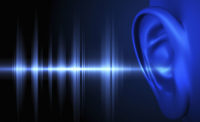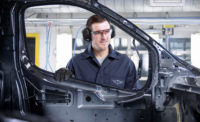When loud noises cannot be reduced or eliminated through engineering controls, workers who are exposed to them must use hearing protection devices (HPDs) to conserve their hearing. This notion is not new, nor is the concept that HPDs require fit-testing to be effective. After all, if the HPD doesn’t fit well or isn’t correctly worn, it may not block out enough noise to do its job.
For many years the constraints of existing fit-testing technology – such as the high cost of equipment and the length of time needed for testing - limited its implementation. Additionally, some systems were only capable of testing certain HPDs.1
Quick & inexpensive
The National Institute for Occupational Safety and Health (NIOSH) set about to develop a quick, inexpensive and effective fit hearing test for HPDs and ultimately came up with HPD Well-FitTM, which measures the amount of sound reduction an individual receives from their HPD and identifies workers who are not sufficiently protected.2
HPD Well-Fit™ requires only a computer running the Windows operating system, a high-definition sound card, sound-isolating headphones and a mouse (which is used as the input device). It can be used to test any type/brand of HPD and provides results within 7 to 10 minutes.
By customizing the system and selecting the frequency bands (125 to 8000 Hertz) to be tested, users are able to choose the best protection for different noise conditions.
Because of the fast turnaround time in the collection of repeat measurements, retraining and retesting can be conducted in just two to five minutes.
NIOSH scientists developed a unique algorithm that is used to calculate the Personal Attenuation Rating (PAR), a measurement of a hearing protector’s ability to reduce noise for an individual.
Field tests
Prior to its rollout, HPD Well-FitTM was tested in several field and laboratory studies. One involved oil industry personnel exposed to noise levels of 110 dB(A) as they flew to and from the off-shore platforms in helicopters. Another field test studied workers who performed sandblasting operations at the Grand Coulee Dam. Their A-weighted time-weighted average exposures were as high as 118 dBA. With fit testing, and – in some cases – after reinstruction or refitting with a different HPD, some 92 percent of the oil industry employees achieved a 25-dB PAR (personal attenuation rating). With the sandblasters, NIOSH was able to use HPD HPD Well-FitTM to determine that the workers were receiving 30 dB or more attenuation from their protectors, and their exposures were not exceeding either the OSHA Permissible Exposure Limit or the NIOSH recommended exposure limit.2
The HPD Well-FitTM system gives companies the ability to accurately measure the fit of the HPDs used by employees – a welcome alternative to the noise reduction ratings that are posted on hearing protection packaging. Since its introduction, the HPD Well-FitTM system has had wide-ranging ramifications for the estimated 22 million workers who are exposed to high levels of noise in the workplace. Without hearing protection they are at risk permanent hearing loss, and have an increased likelihood of being involved with workplace accidents due to their inability to hear warning signals.
References
- https://blogs.cdc.gov/niosh-science-blog/2013/05/31/well-fit/
- https://www.cdc.gov/niosh/docs/2015-181/default.html







